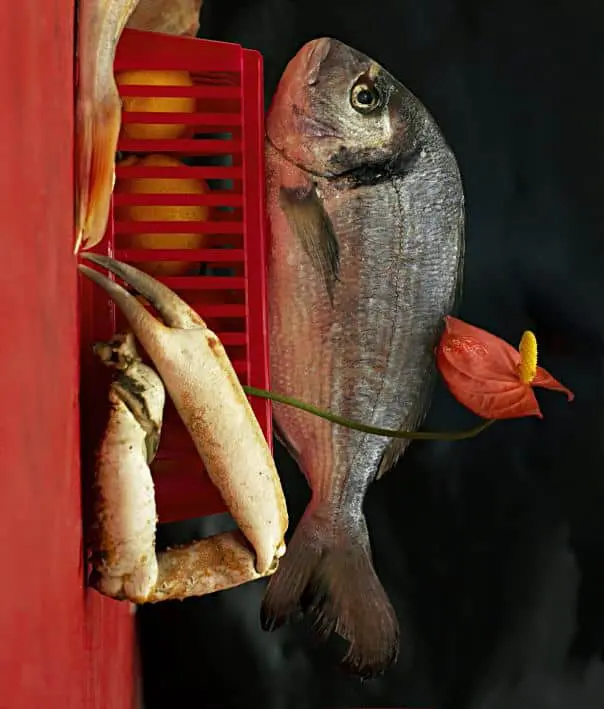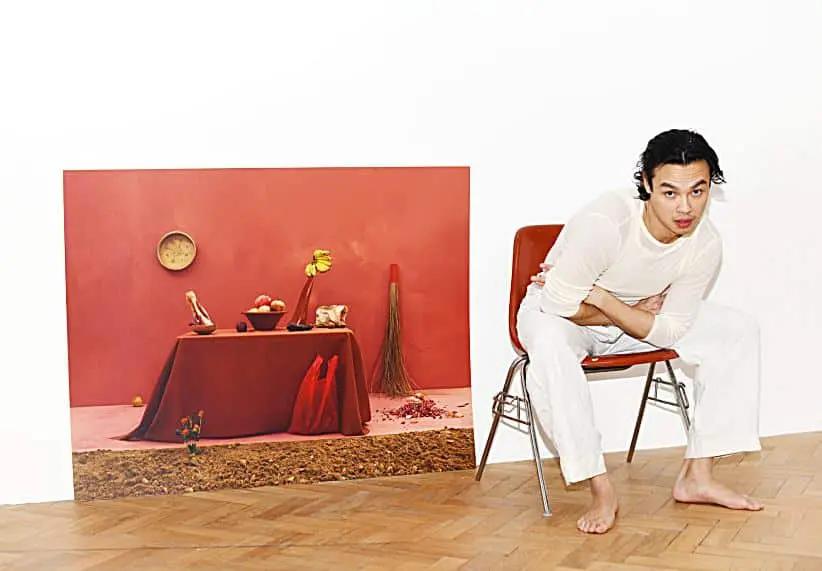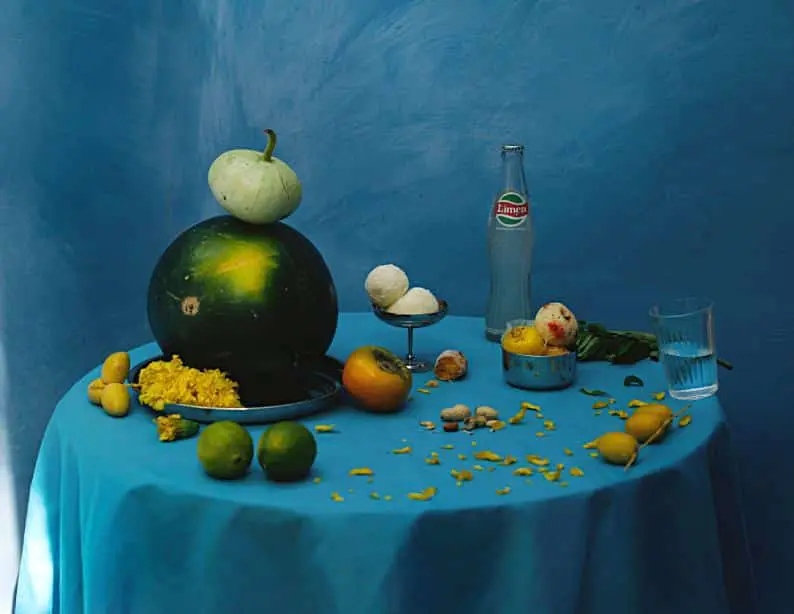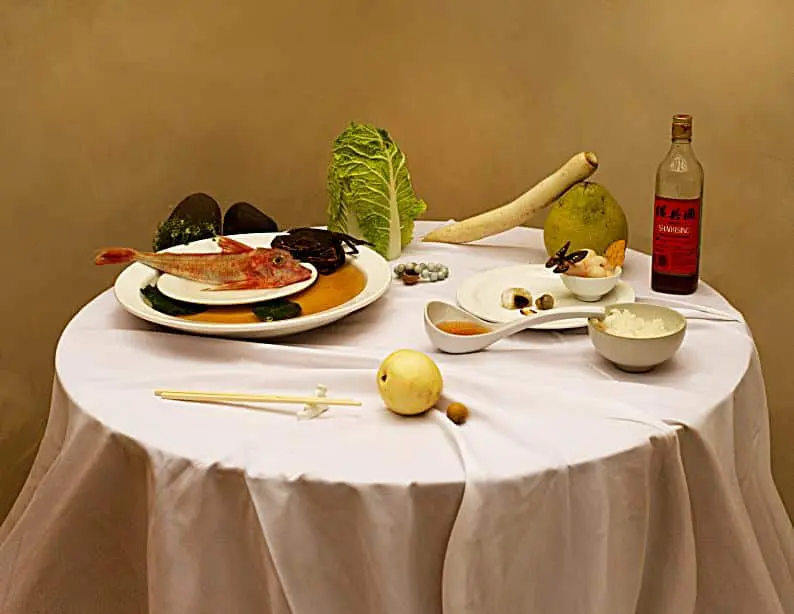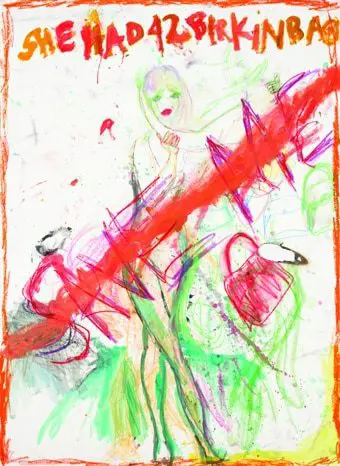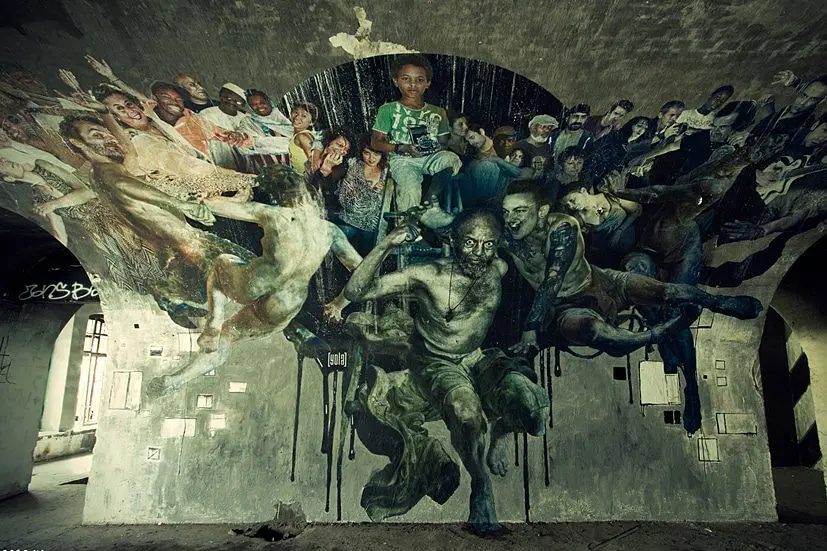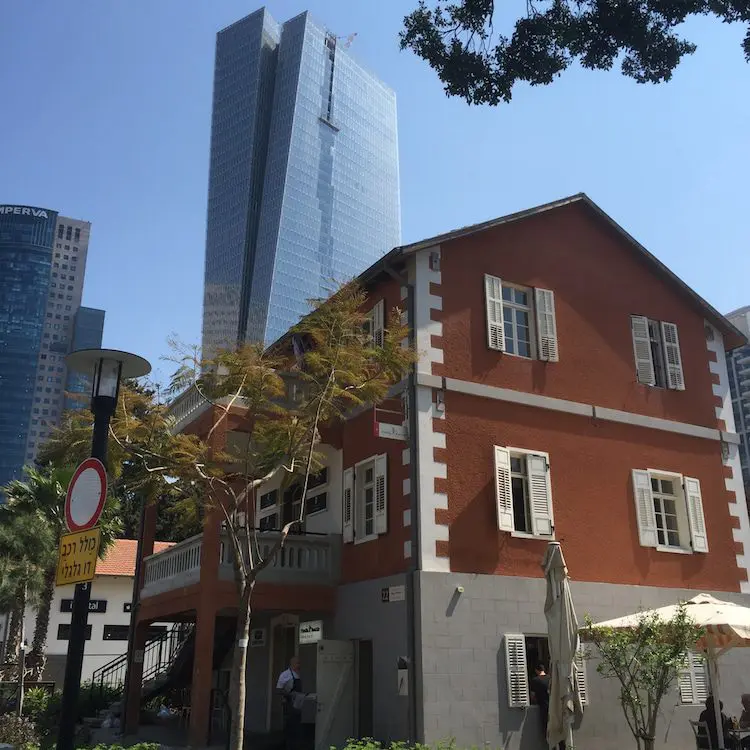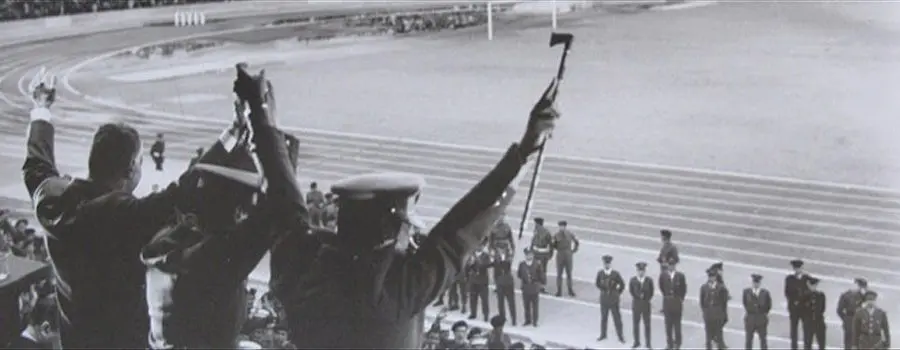words Victoria Chan
Kenneth Lam, A seat at our table, 2024
For Kenneth Lam, home is best served at the dining table. His first solo exhibition “A seat at our table” celebrates dishes, ingredients and rituals that define Redbridge’s immigrant communities — and is now on display at SPACE, London’s largest provider of gallery space for emerging artists.
Born into a family of chefs and restaurant owners, Lam’s fixation with food, which he describes as a unique expression of “Chinese love,” came early in life. Today, the portrait and still life photographer is also a creative director for Bun House and Pleasant Lady in London, and most recently, a partner at Rice Service in Berlin.
In his exhibition, which runs until mid-October, food traditionally overlooked by a Western lens is placed front and center, allowing residents to represent home on their own terms. To get there, Lam did a callout for the project, inviting anyone in the Redbridge area who wanted to be photographed and interviewed to come to the studio with food, clothing and keepsakes they identified most with. After taking their portraits and using their personal artifacts in a still life, the result was a collection of images that held stories of family, heritage and identity.
We discussed the residents that surprised him, the controversial debate around British Chinese food, and how one finds belonging when home feels far away.
What’s important to you when you’re taking a portrait?
“I want to make the person look as beautiful as possible — and I don’t mean by getting them the best outfit, hair and makeup. I talk to someone for a while and get to know them. Or sometimes, even if I have five minutes with them, it’s looking at a certain angle, mannerism, behavior or energy they have and showcasing that. It’s maybe a bit selfish how I photograph people, but it’s done in how I think they look most beautiful. Often that can be an emotion, trait or a very small thing I’ve noticed about them on that day.”
What drew you to the theme of this exhibition, which positions home as a dining table?
“I was commissioned by SPACE to create a series based on Redbridge, an area I didn’t really have any relationship with. But as soon as I walked in, you could tell Redbridge is a place many people of different ethnicities and backgrounds have immigrated to, and it reminded me of an area I grew up in, which was Wembley. I think something that happens with immigration is that food immigrates as well. Ingredients immigrate. And I think often food is the thing that tells many stories, like where we gather, eat and have conversations — everyone has a story with food.”
Can you describe your process— from interviewing Redbridge residents and photographing them, to capturing their stories in portraits?
“I first did a callout [on Instagram] and then after, I put up a few posters and asked around. It became a very organic thing, really. A lot of people messaged me through Instagram, but it was also a thing where people had friends or relatives that were in Redbridge, and then word got around.
When I had chosen my candidates, I would meet up with them or go for a meal with them to go through items, objects, ingredients or dishes that represented them. It was very intimate. With this project, I think it had to be quite personal. And with my work, especially before this exhibition, it’s always been personal because I’m not scared to get personal with myself and ask myself those questions. In order to take quite a sensitive or intimate portrait of someone for this exhibition, I had to build trust. So there was a lot of talking and gaging how these people felt and what story they wanted to tell about themselves.”
Did anything surprise you about the people you interviewed?
“It was difficult. I’ve always heard my parents’ stories growing up in fishing villages, my mom telling me she didn’t have shoes growing up, or my dad getting an egg for his birthday if he was lucky. This was proper poverty — rice fields, picking leeches off your feet and everything.
When I was interviewing these people, I was like, oh my god, that’s really hardcore. I interviewed these Malaysian nurses and they were the first nurses to join the NHS and they’re talking about being still in their teens, not speaking a word of English, sending money back home and having phone calls with family during Lunar New Year and hearing all of this laughter. And they would go back to their nurse dormitories and eat like, spam salad. Meanwhile, this Irish lady who was in her nineties told me she saw signs all over London that said “No Irish, no Blacks,” and the only safe place she had was the Irish pub — so I created this portrait, still life, to represent that place.”
“There’s so much hardship in being an immigrant and I don’t think it’s often showcased as something beautiful and rich. When I interviewed these people, I found something I related to, but I also found these stories very beautiful at the same time.”
Why did you choose the photos to resemble classical still life?
“I like how objects can symbolize or represent a memory. When you curate or create a still life, you’re working with things that aren’t alive, but making them seem alive.
When I reached out to people after the callout to visualize their photos, I kept asking them, What do you smell? What can you taste? What can you hear? What colors are there? So many people referenced home, like traveling back to India or Kenya. And these colors, I think I didn’t realize at the time, but when I walked into the exhibition space, I was like, wow, it looks like we’re traveling right now. The show was so much brighter than I thought it would be. You walk in, and there’s bright blue, bright red, and it’s because in the end, these stories and still lives represent the visuals people were giving me from their memories of home. I wanted to show beauty in all of these ethnicities and cultures that I was diving into.”
What would your dining table look like?
“I built a small installation for the show, which was this Chinese restaurant table. It had white cloth and I got a fan to make it blow and look really disheveled, as if someone had just tugged the tablecloth off it. That represented my very first job at my parents’ restaurant as a kid — I’d have to go downstairs and change these tablecloths for the next customers to come. And I remember as a young boy, waving these giant tablecloths in the air, and they’d be wafting, and I’d have to lay them flat and then place the plates and chopsticks on them. But you’re a kid, and things would fall. So I remade that into this moving installation as an homage to the first table I set. I think that would probably be what my table would look like.”
Did you hear about the viral takeout trend on TikTok last year? People were pretty outraged over the authenticity of British Chinese food, like curry sauce and french fries plated with chicken balls and chow mein. As someone who grew up in a Chinese restaurant, what’s your take on the debate this created over what makes certain food more authentic than others?
“I’ve seen the video, and that is not the food we grew up eating, that’s not our food. But I understand what it means to immigrate to a country, grow up in a demographic which you are not the majority in, and have to evolve your food in order to make it palatable and sellable for that market.
I’m very fortunate now that with the restaurants I work with, I almost have an attitude: this is the food that we make that you are going to eat. It’s almost like, this is duck and rice, but there are bones in it, and this is how we eat it back home. I think in my generation especially, food culture is changing, where people want to try something more authentic. But back then, maybe when my parents were opening restaurants or in parts that aren’t a big city, there were lots of establishments that had to evolve their menus purely to survive and make money. So no judgment, do what you need to do. If you need to sell chicken balls and put gravy on it because it’s going to sell in this small English village, then do it. At the end of the day, people need to make a living. And I get it.”
What was the most rewarding part of this project for you?
“On opening night, seeing residents of Ilford and Redbridge come through the door, and the people that were photographed by me look at their portraits, some who were crying. I remember Mary, the ninety year-old Irish woman — she brought her whole family, and her niece cried because in the still life, I had placed a black and white photo in there, and she was like, “That’s my mom, and she’s passed away, but she’s now forever in this still life. She’s in this gallery.” That was so rewarding in the sense of having residents come up to me and say, you’re changing the stigma of our community and ethnicity by showcasing me as someone beautiful. For me, art can often be represented as this thing for high culture and everything. But this felt unpretentious and safe, sweet and warm, and also comforting.”
A seat at our table – A solo exhibition by Kenneth Lam is showing until 12 October 2024 at SPACE Ilford, London.
This interview has been edited for length and clarity.

